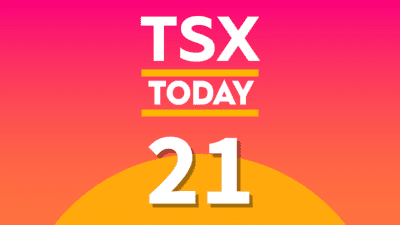The last decade has seen investors shift away from traditional mutual funds to alternatives like index funds, exchange-traded funds (ETFs), and the rise of popular online brokerages like Robinhood. That said, active investing through a brokerage is time consuming and requires research from investors who hope to have success. What about Canadians who are simply too busy to commit to this strategy? Today, I want to look at two ETFs that you can plug in and sleep easy on going forward. Let’s jump in.
Investors who want to set and forget it can scoop up this index-tracking ETF
North American indexes have broadly outperformed actively managed funds over the past decade. Indeed, there has been a renaissance for passive investors who are comfortable broadly tracking the performance of Canadian and U.S. stocks. This strategy may continue to bear fruit, as markets gorge on loose monetary policy.
Prospective passive investors may want to target iShares Core S&P/TSX Capped Composite Index ETF (TSX:XIC) in this environment. This ETF offers investors the chance to own the entire Canadian stock market. It boasts an extremely cheap MER of 0.06%. Meanwhile, the fund facts list it as a medium risk. Shares of this ETF have climbed 4.4% in 2022 as of mid-morning trading on March 23. Indeed, the Canadian stock market has performed well due to its heavy weighting in the energy sector.
Canadian investors should recognize the top weighted equities in this fund. Royal Bank, TD Bank, and Enbridge round out the top three.
You will not lose sleep investing in Canada’s top banks
Instead of tracking the entire stock market, investors may want to mimic the performance of Canada’s top financial institutions. Canadian banks are renowned for their stability. You can trust these profit machines for the long haul.
Investors looking to broadly invest in Canada’s top banks should look to BMO Equal Weight Banks ETF (TSX:ZEB). This fund is designed to replicate the performance of the Solactive Equal Weight Canada Banks Index. Moreover, the ETF is professionally managed by BMO Global Asset Management. Its shares have increased 3.2% in the year-to-date period.
This ETF also boasts a relatively cheap MER of 0.28%. Like the previous fund, it is medium risk. The fund launched all the way back in late 2009. That means that holders of these ETF have been able to take advantage of one of the longest bull markets in history. Over that time, Canada’s banks have been world beaters. These institutions look stronger than ever in the first quarter of 2022.
The holdings in this ETF are the Big Six Canadian banks, close to equally distributed. Bank of Montreal and National Bank are two of the three largest holdings by a marginal percentage. Better yet, this ETF offers a monthly distribution of $0.12 per share. That represents a 2.8% yield.









